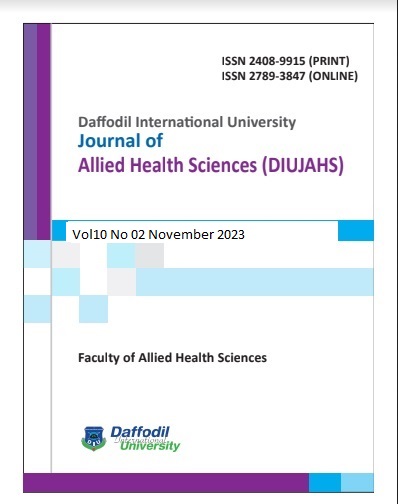Dementia Among Bangladeshi Women: A Critical Public Health Concern
DOI:
https://doi.org/10.36481/diujahs.v10i2.njanw655Keywords:
Dementia, Cognitive impairment, Bangladesh.Abstract
Naheed et al. research found higher dementia rates in females. This can be explained due to different hormones, life expectancy, and education levels (Naheed et al. 2023). We should take steps to raise awareness toward this topic. Educating women about dementia risks and ensuring equal access to healthcare can aid in early detection and management. Encouraging a healthy lifestyle including regular exercise, a balanced diet, mental stimulation through activities and social engagement, and managing cardiovascular risk factors can help reduce the risk of dementia. For example, a study conducted by Gong et al. found that women with Type 2 diabetes, mental health issues and larger waist size show stronger links to dementia than in men. This might be due to women's higher antidepressant use, potentially increasing dementia risk. Variances in body composition and fat distribution driven by sex hormones in diabetes could also play a role, needing more study for clarity (Gong et al. 2021). Further research intogender-specific risk factors for dementia can lead to more targeted prevention strategies and treatments which it is reported that some female. Dementia risk factors differ between sexes/genders. For instance, physical activity and education may lower risk in women (Sindi et al. 2021). Finally, building support networks for women affected by dementia and their caregivers is crucial. Support groups and resources can aid and
alleviate some of the burdens associated with caregiving. The Lancet Commission on Dementia Prevention suggests that around 40% of dementia cases might be preventable by addressing twelve key risk factors: low education, midlife hearing loss, obesity,
hypertension, late-life depression, smoking, physical inactivity, diabetes, social isolation, excessive alcohol consumption, traumatic brain injury, and air pollution (Livingston et al. 2020).

